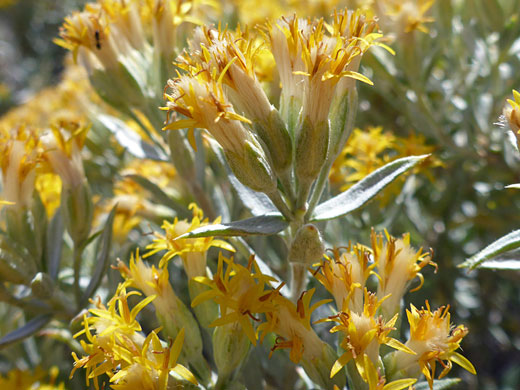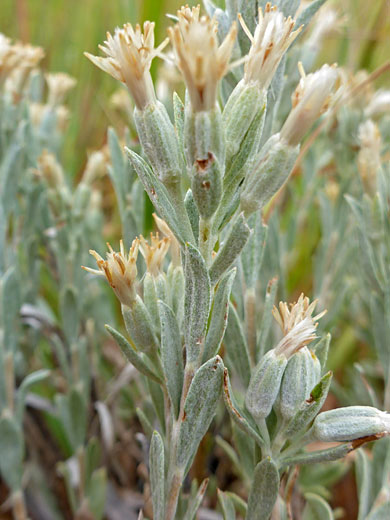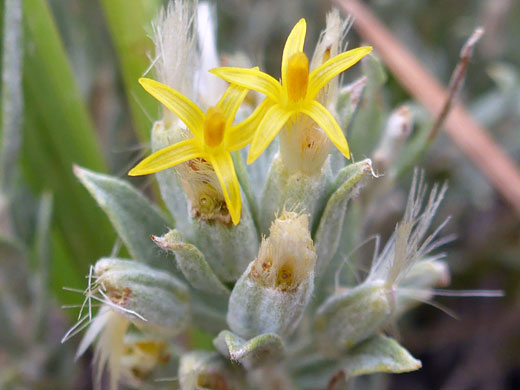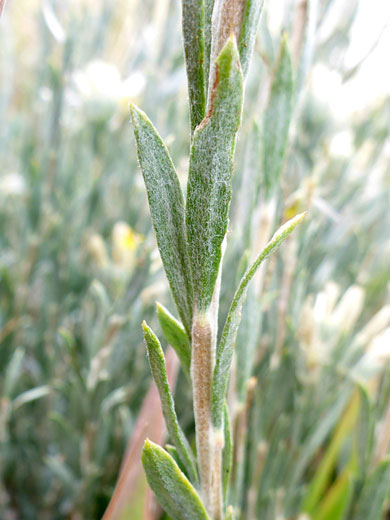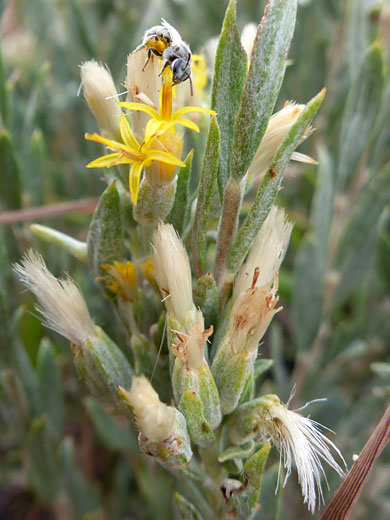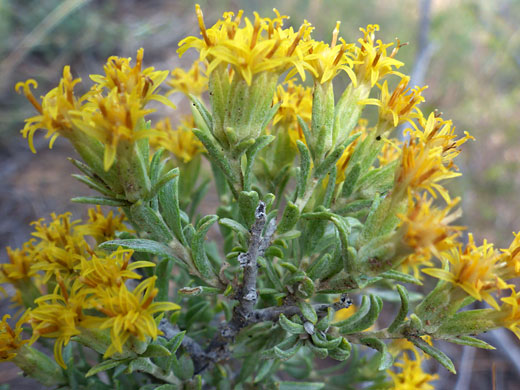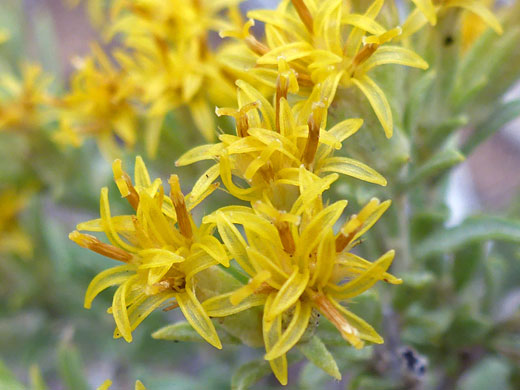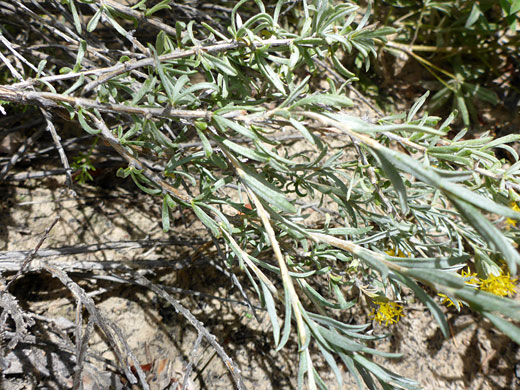
Yellow florets and whitish bristles - tetradymia canescens, Step House, Mesa Verde National Park, Colorado
Common names:
Spineless horsebrush, gray horsebrush
Family:
Scientific name:
Tetradymia canescens
Main flower color:
Range:
The Rocky Mountain states and all states to the west
Height:
Up to 3 feet
Habitat:
Woodland, scrubland, roadsides; 2,000 to 10,500 feet
Leaves:
Lanceolate to spatulate, up to 1.5 inches long and 0.2 inches wide; hairy
Season:
June to September
Tetradymia canescens is a small shrub, forming dense clumps up to 3 feet high and broad; individual plants produce up to five stems. Leaves are greyish-green in color, covered by whitish, tomentose hairs. Leaves are not spiny, unlike some other horsebrush species. Leaves tend to angle upwards, staying close to the stem. Smaller secondary leaves may be present, at the base of the primaries. Leaves have a prominent center vein, and sometimes faint, palmate side veins.
Flowerheads form clusters of between three and eight, at the top of the stems. They have a cylindrical involucre, up to half an inch long, enclosed by four hairy, lance-shaped, equal-length phyllaries. There are four yellow disc florets, opening to five narrow lobes, thickest along the margins. The florets are surrounded by up to 150 white or pale brown pappus bristles.
Flowerheads form clusters of between three and eight, at the top of the stems. They have a cylindrical involucre, up to half an inch long, enclosed by four hairy, lance-shaped, equal-length phyllaries. There are four yellow disc florets, opening to five narrow lobes, thickest along the margins. The florets are surrounded by up to 150 white or pale brown pappus bristles.
All Contents © Copyright The American Southwest | Comments and Questions | Contribute | Site Map

